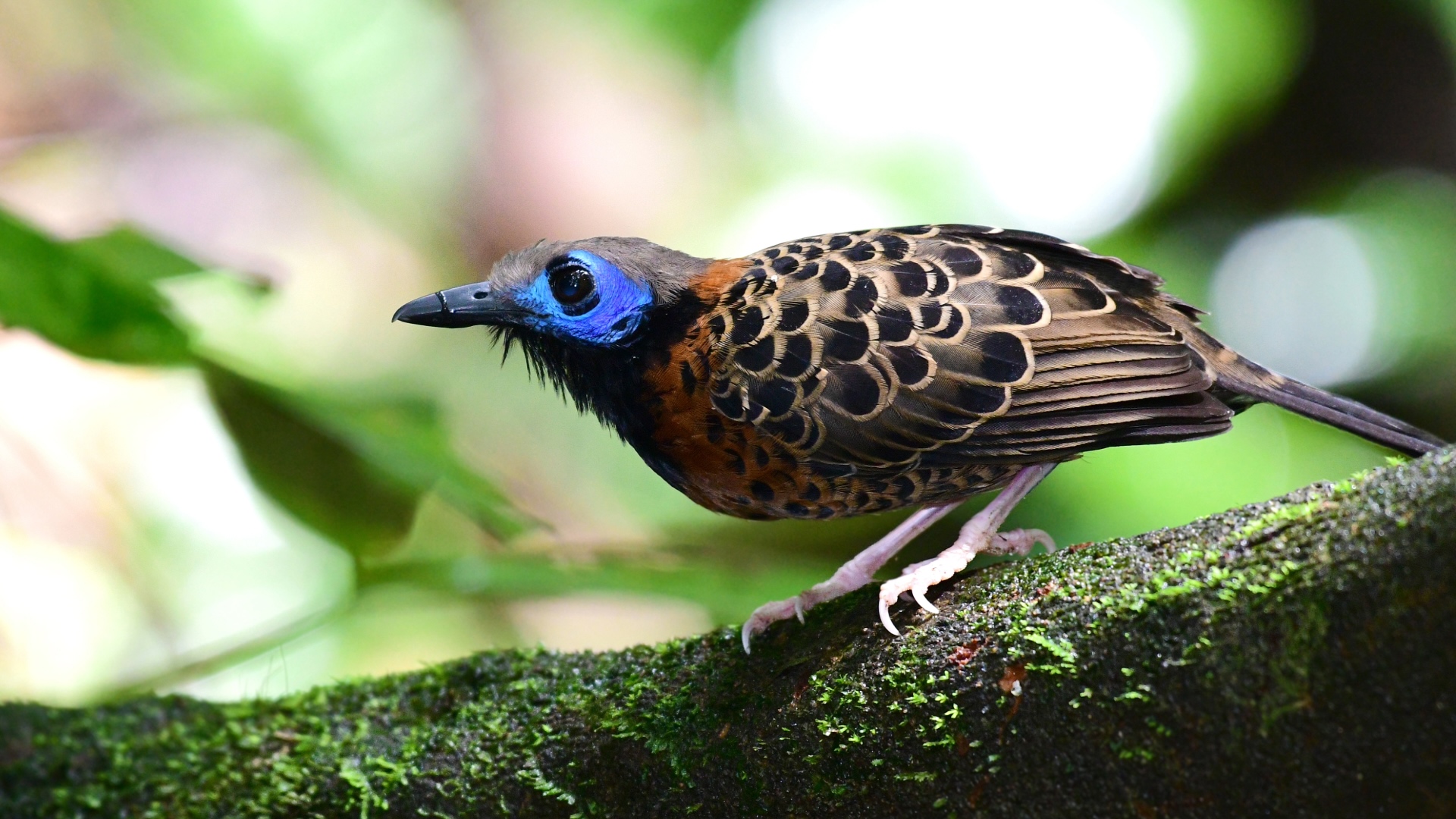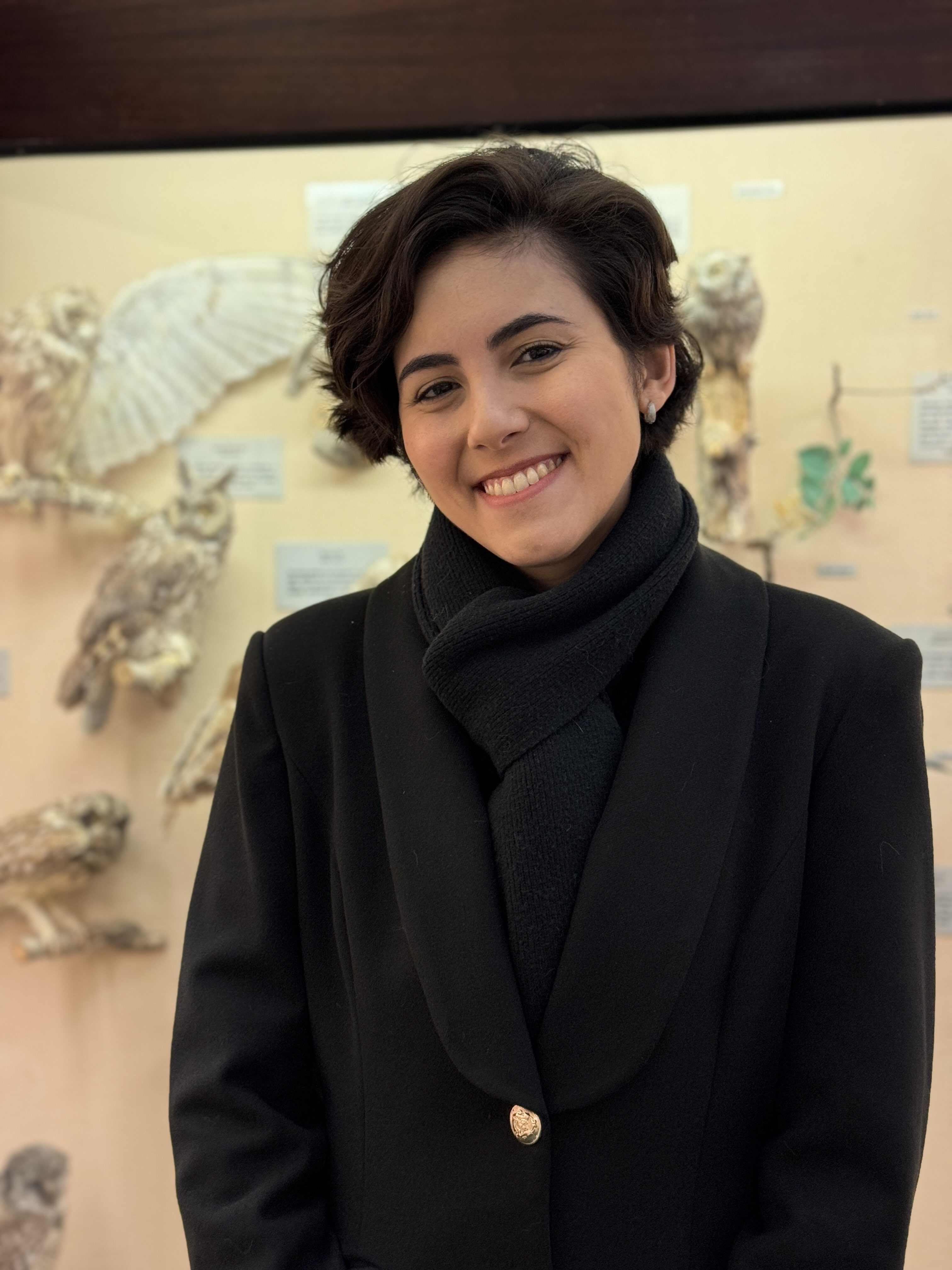LSU Grad Student Named National Geographic Explorer to Study How Birds Stalk Army Ants for Easy Food—And It’s Not the Ants They’re After
January 26, 2025

The Ocellated Antbird (Phaenostictus mcleannani) is among the many bird species that follow army ant swarms, capitalizing on the chaos of the raids to catch insects escaping the ants.
– Image Credit: Adobe Stock.

Juliana Damasceno is a second-year PhD student at the LSU Museum of Natural Science.
Juliana Damasceno, a graduate student at the LSU Museum of Natural Science (LSU MNS), has been awarded a prestigious grant from the National Geographic Society to become a National Geographic Explorer. The grant will fund her research in the Colombian Amazon, where she and a team of scientists will study the remarkable adaptations of ant-following birds, which have evolved unique strategies to find food.
These birds rely on predatory army ants, social insects renowned for their massive foraging raids often dramatized in movies and wildlife documentaries as terrifying troops devouring everything in their path. If you’ve seen Indiana Jones and the Kingdom of the Crystal Skull or episodes of the documentary Planet Earth, you’ve likely witnessed their portrayal as unstoppable, swarming predators.
While their public image leans toward the dramatic, army ants are vital in tropical environments, serving as both predators and ecosystem engineers. As relentless hunters, they regulate insect and small animal populations, maintaining balance in the food web. Their foraging also supports nutrient cycling by breaking down organic matter and dispersing nutrients. Additionally, they form intricate symbiotic relationships with numerous species, including antbirds, lizards, and frogs. As the ants move through the forest, they disturb leaf litter, flushing out insects and small creatures. Antbirds stay close to the ant columns, quickly seizing the fleeing prey as they emerge.
Damasceno’s study focuses on a critical adaptation of these birds: their ability to track the temporary nests, or bivouacs, of army ants, which are frequently relocated overnight.
"Our hypothesis is that ant-following birds use olfaction to detect the chemical trails left by the ants," Damasceno explained. "Preliminary genomic data indicate these birds possess a high number of olfactory receptors, suggesting that their sense of smell might play a more important role in their behavior than previously thought."
Army ants have a sharp, musky smell, often mixed with a sour or earthy scent from their surroundings and the chemicals they use to communicate. If their research shows that antbirds use their sense of smell to locate army ant nests, it would provide compelling evidence for the importance of olfaction in birds. This sensory mechanism is not often emphasized in bird biology, where sight is typically considered the dominant sense. Such findings could reshape our understanding of how birds interact with their environment and adapt to their ecological niches.
To test this hypothesis, Damasceno and her team will conduct fieldwork in a remote region of the Colombian Amazon that has only recently become accessible. Using mist nets baited with synthetic chemical compounds that mimic army ant odors, they aim to quantify bird capture rates and confirm their olfactory adaptations.
"Obligatory ant-followers also exhibit remarkable spatial memory and cooperation to track these nests, but little is known about their behavior,” Damasceno added. “Our field experiment will include camera traps to capture videos and provide insights into their movements and interactions with army-ants and our scented baits."
This research extends beyond ornithology, examining how species interactions, such as those between army ants and birds, shape biodiversity and evolution. As vital predators in Neotropical forests, army ants play a key role in influencing ecosystems. With deforestation and habitat loss threatening their populations, understanding these relationships is crucial for predicting and mitigating the cascading effects on species that depend on them.
The expedition will bring together a multidisciplinary team of ornithologists from Colombia, Brazil, and the United States, along with members of local communities. The research is supported through a partnership with the Instituto Alexander von Humboldt, where Dr. Gustavo Bravo, Curator of Birds and an LSU MNS PhD alumnus, serves as a key collaborator.
Damasceno is a second-year PhD student working with Assistant Professor Gregory Thom at the LSU MNS. Dr. Thom is the Curator of Genetic Resources, and his research uses genomics to explore how new species of birds are formed and shaped by natural selection in tropical ecosystems. "It’s a great achievement for a graduate student to be named a National Geographic Explorer. The lab as a whole is really excited about this project that will open many doors for Juliana’s career development," said Dr. Thom about the award.
As a National Geographic Explorer, Damasceno joins a prestigious global network of scientists committed to illuminating and protecting the natural world. In addition to funding, she will receive professional development opportunities, leadership training, and resources for building a global community of collaborators.
"Being named a National Geographic Explorer is such an honor," Damasceno said. "It’s a chance to highlight the amazing connections in our ecosystems, work with other explorers, and bring attention to the need to protect biodiversity."